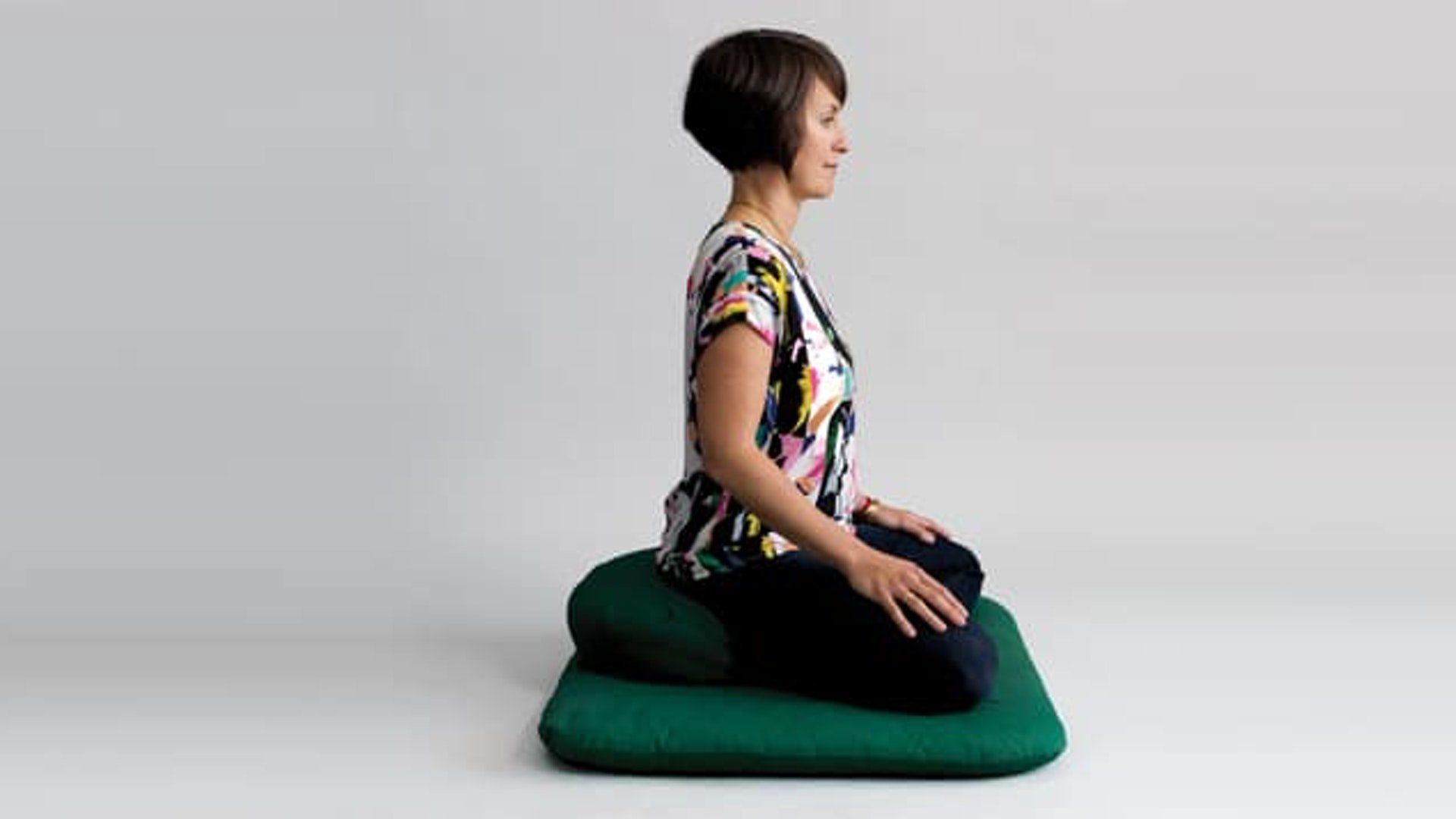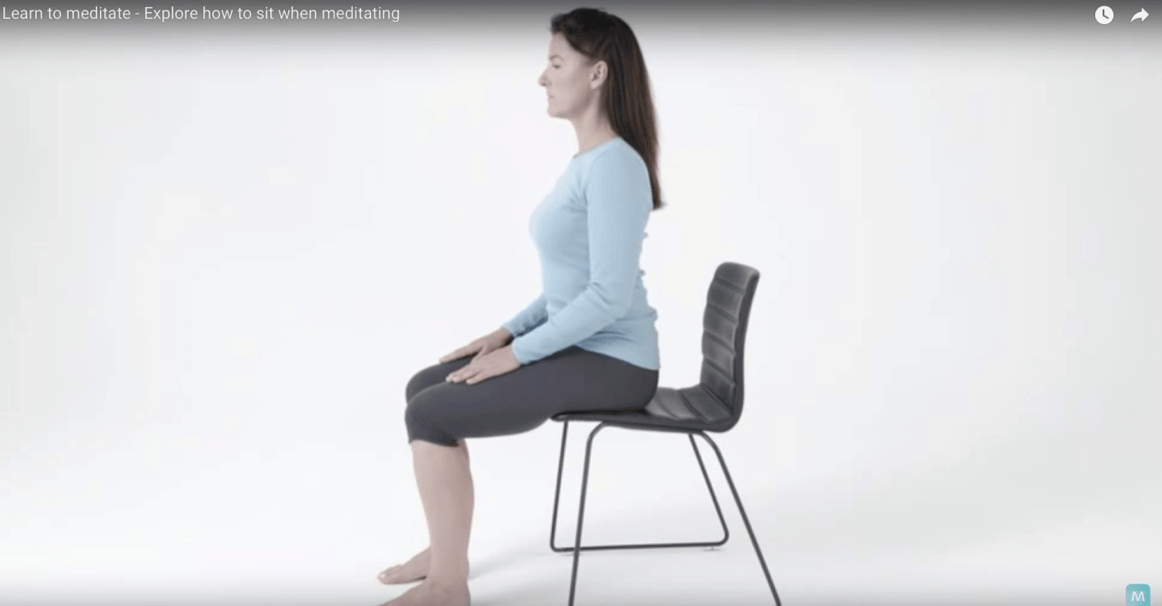How to do Zazen
Anyone in the general population who might want to try zazen may be fortunate to live near a Zen center. However, Zen centers are not distributed so liberally throughout the country that most people have access to them. For most people, developing a zazen practice is going to be an individual pursuit.

Figure 1
I will be recommending a version of zazen modified slightly from that found in Zen centers. Basically, zazen is a very simple practice of sitting with a straight back and focusing on breathing. You watch your breath come in and go out, returning to this focus whenever you notice that you have been distracted from it. If you cannot keep your back straight because of injury or a structural problem, I have known an enlightened person who had a deformed back that he could not move at all, so you can still find your way in zazen without a straight back. The important thing is simply to keep your back as straight as you can and try to keep your focus on your breathing.
How to sit while meditating is a matter of individual preference. There is a common posture of sitting cross-legged on the edge of a solid cushion, which can be placed on a mat. Sitting on the edge of the cushion allows the knees to sink to the floor or mat. This position is shown in Figure 1. In one form of this posture, one or the other foot (it doesn’t matter which) is placed on the opposite thigh, and the other foot crossed over onto the other thigh. For most people, this is an overly strenuous position. A modification is to place one or the other heel between the legs; the other heel is placed in the bend of the other leg, in the crease between thigh and calf. Or you may simply cross the legs while keeping both heels on the floor.

Figure 2
If sitting cross-legged is not comfortable, using a meditation bench enables you to sit on your knees, or you can also sit on the outer edge of a chair. Sitting on a chair, which is shown in Figure 2, is the way I meditate now because I have a sensitive knee that is painful to bend.
As the two figures show, the hands can be placed on or near the knees, palms down. This seems to me to be the preferable position for the hands. If you put a little pressure in your fingers to stabilize the hands, you can tell whether your back is drifting out of the straight position, leaning forwards or backwards or to the right or left. Movement in your hands will tip you off.
It is important not to expect anything when you are meditating, certainly not enlightenment. There is no spiritual state that can be accurately imagined. Spiritual states are like the taste of an orange; it is impossible to know it unless you experience it. Even if, while meditating, you do experience something that you feel is very positive, it is important not to expect or aim at a reoccurrence of the experience. It is best to consider meditation as practicing a skill, where you are simply trying to improve your ability to move from distraction back onto breathing.
Sit with your eyes open. As long as you are not going to sleep, if your eyes close naturally in the course of a session, just let them close. Also, you should try to sit in a location in your dwelling that is free from distraction, and also to face something that will not lead you to explore it visually, such as a wall or a suspended bath towel.
Zazen is not a casual process but it need not be burdensome. In the beginning, it is best to practice it for short periods, say fifteen minutes, at times of day convenient for you, twice a day, morning and late afternoon or evening. You can gradually expand the period of meditation to thirty or forty minutes, which are standard for zazen.
There are ancillary benefits to zazen that will encourage you as you proceed in the practice. Some of these are greater calm and clear-headedness, greater efficiency, and lessening of any tendency to get angry or upset. There is also a possible impediment that might emerge, which is discouragement because distraction is so hard to keep at bay. If you start with short sitting periods, as advised above, you will be less vulnerable to this. Keep in mind that the very core of zazen is to shift from distraction back onto breathing. There will always be distraction. It is as though to maintain a steady focus on breathing in and out is a strain for the mind, and the mind frequently seeks relief in distraction. This must be accepted as a normal part of zazen.
Zen Buddhism, and its characteristic practice of zazen, began in 13th-century Japan by a priest named Eihei Dogen. The practice has lasted for some 700 years. In spite of the advice of Zen teachers not to aim for anything while meditating, the practice must have had a purpose or no one would have taken it up.
The purpose of zazen is common to the major mystical traditions. This purpose is vividly expressed by Nisargadatta, in the Hindu tradition, who says, “All you need to do is to cease taking yourself to be within the field of consciousness.” [1] “Yourself” in this quotation is the “I” that we are all conscious of when we say or think, for example, “I am leaving the room,” “I am eating dinner,” “I have the opinion that….” This awareness can be called “I-consciousness.”
Without experiencing it, it is impossible to imagine the absence of I-consciousness from the mind. It is equivalent to enlightenment, which unless experienced also cannot be imagined. In the view of Adjashanti, a contemporary Zen teacher, enlightenment is the realization of non-separateness, and this realization comes to a person at the moment when I-consciousness is dropped. [2] “Non-separateness” refers to the condition of the world in which any individual phenomenon is not separate but interconnected or interdependent with all other phenomena. A person realizing non-separateness perceives the whole world to be moving as one grand thing, and feels himself or herself to be a comfortable part of this unified world, interdependent with it, merged with it, as everything else.
Since this essay is a addressed to people who will probably be meditating by themselves, it is significant that the Buddhist Theravada tradition, or early Buddhism, recognized that a person meditating without a teacher, and therefore outside of a community, could attain enlightenment. The tradition called such people “pratyeka-buddhas” or solitary buddhas.
Under the term of “mindfulness,” meditation is often approached as bringing only the “ancillary benefits” mentioned above. Zazen, however, as explained, has a purpose that goes way beyond that, namely dropping the self and enlightenment.
Although dropping the self can be sudden, more commonly it is a gradual process that occurs throughout the lifetime of a meditator. This gradual process is described by Nisargadatta, who says, “The dissolution of personality” is “like washing printed cloth. First the design fades, then the background, and in the end the cloth is plain white.” [3]
To get to “plain white” may not happen in one’s lifetime, or it may happen and one not recognize it. Dogen says, “When buddhas are truly buddhas they do not necessarily notice that they are buddhas.” [4] In other words, when the self is dropped, you don’t think about yourself.
Zazen can be depended on to do its work of dropping the self without deliberate effort on the meditator’s part. Of course a person should follow a discipline of sitting regularly, twice a day for a specified time as suggested above, but beyond that zazen works automatically with no thought given to the process. Of key importance is simply, session after session, to move from distraction back onto breathing. If the self leaves suddenly, there is a sense of a grand culmination, but if it leaves gradually, which is the usual case, the zazen practitioner bit by bit feels lighter and freer, and there is always a gain.
Footnotes
- Nisargadatta, I Am That, Durham, NC, 1973, p. 148.
- The Sun, December, 2007, p. 10.
- Nisargadatta, p. 401.
- Dogen’s Genjo Koan.
All Rights Reserved | Zazen Essays